-
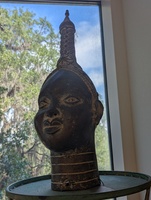 [Untitled]
[Untitled]
-
 Ascending Yellow is a memorial exhibition and art auction celebrating the late Dr. Richard A. Long, the longtime Fine Art Advisor to the Galleries. Long’s steadfast devotion to the preservation of the permanent collection made him an invaluable supporter until his death in January 2013. Long had an extensive cultural legacy in the humanities – founder of the Triennial International African Art Symposium in its 15th cycle – and his contribution to the visual arts.
Ascending Yellow is a memorial exhibition and art auction celebrating the late Dr. Richard A. Long, the longtime Fine Art Advisor to the Galleries. Long’s steadfast devotion to the preservation of the permanent collection made him an invaluable supporter until his death in January 2013. Long had an extensive cultural legacy in the humanities – founder of the Triennial International African Art Symposium in its 15th cycle – and his contribution to the visual arts. Ascending Yellow is a memorial exhibition and art auction celebrating the late Dr. Richard A. Long, the longtime Fine Art Advisor to the Galleries. Long’s steadfast devotion to the preservation of the permanent collection made him an invaluable supporter until his death in January 2013. Long had an extensive cultural legacy in the humanities – founder of the Triennial International African Art Symposium in its 15th cycle – and his contribution to the visual arts.
-
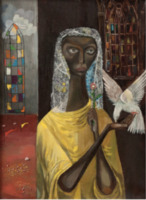 Work of Frederick D. Jones Jr in relation to the art movement known as Social Surrealism. As a branch of Social Realism, Social Surrealism was similarly invested in depicting the plight of workers, laborers, and other social groups positioned on society's margins. The work of Social Surrealists, however, was distinctive for its engagement with the European Surrealist tradition and its emphasis on dreamlike imagery inspired by the unconscious.
Work of Frederick D. Jones Jr in relation to the art movement known as Social Surrealism. As a branch of Social Realism, Social Surrealism was similarly invested in depicting the plight of workers, laborers, and other social groups positioned on society's margins. The work of Social Surrealists, however, was distinctive for its engagement with the European Surrealist tradition and its emphasis on dreamlike imagery inspired by the unconscious. Work of Frederick D. Jones Jr in relation to the art movement known as Social Surrealism. As a branch of Social Realism, Social Surrealism was similarly invested in depicting the plight of workers, laborers, and other social groups positioned on society's margins. The work of Social Surrealists, however, was distinctive for its engagement with the European Surrealist tradition and its emphasis on dreamlike imagery inspired by the unconscious.
-
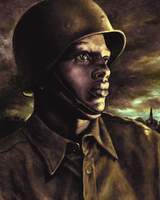 The 366th Infantry Regiment was a segregated (all African American or the more appropriate time-specific term, Negro) unit of the United States Army; it served with distinction in both World War I and World War II. This unit was particularly unique because it was one of the few Negro units with all its own officers and personnel.
The 366th Infantry Regiment was a segregated (all African American or the more appropriate time-specific term, Negro) unit of the United States Army; it served with distinction in both World War I and World War II. This unit was particularly unique because it was one of the few Negro units with all its own officers and personnel. The 366th Infantry Regiment was a segregated (all African American or the more appropriate time-specific term, Negro) unit of the United States Army; it served with distinction in both World War I and World War II. This unit was particularly unique because it was one of the few Negro units with all its own officers and personnel.
-
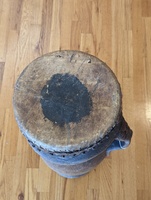 [Untitled]
[Untitled]
-
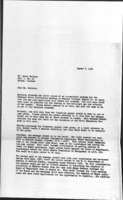 [Untitled]
[Untitled]
-
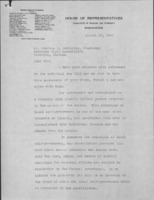 [Untitled]
[Untitled]
-
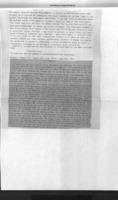 [Untitled]
[Untitled]
-
[Untitled]
-
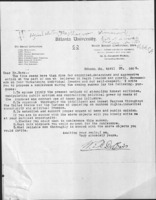 [Untitled]
[Untitled]
-
 [Untitled]
[Untitled]
-
 [Untitled]
[Untitled]
-
 [Untitled]
[Untitled]
-
 [Untitled]
[Untitled]
-
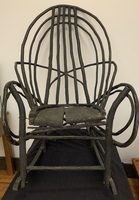 [Untitled]
[Untitled]
-
 [Untitled]
[Untitled]
-
 [Untitled]
[Untitled]
-
 [Untitled]
[Untitled]
-
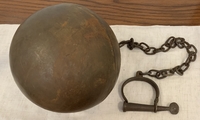 [Untitled]
[Untitled]
-
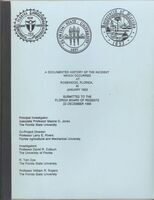 [Untitled]
[Untitled]
-
 The Muses symbolize the involuntary marriage of African and European cultures and the evolution of the African artist in the Western hemisphere. Seventeen legendary black artists characterize Woodruff’s notions of a cultural amalgamation including Iqueigha, 13th Century sculptor, Joshua Johnston, a colonial portraitist and a host of 19th and 20th Century artists, such as Henry O. Tanner, Edward M. Bannister, Jacob Lawrence, Richmond Barthe, and Charles Alston.
The Muses symbolize the involuntary marriage of African and European cultures and the evolution of the African artist in the Western hemisphere. Seventeen legendary black artists characterize Woodruff’s notions of a cultural amalgamation including Iqueigha, 13th Century sculptor, Joshua Johnston, a colonial portraitist and a host of 19th and 20th Century artists, such as Henry O. Tanner, Edward M. Bannister, Jacob Lawrence, Richmond Barthe, and Charles Alston. The Muses symbolize the involuntary marriage of African and European cultures and the evolution of the African artist in the Western hemisphere. Seventeen legendary black artists characterize Woodruff’s notions of a cultural amalgamation including Iqueigha, 13th Century sculptor, Joshua Johnston, a colonial portraitist and a host of 19th and 20th Century artists, such as Henry O. Tanner, Edward M. Bannister, Jacob Lawrence, Richmond Barthe, and Charles Alston.
-
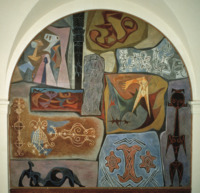 Influences conveys the impact of traditional art forms (assigning African art the central role) in the development of 20th century Western art. Apparent are the stylized works of European masters such as Henry Moore, Modigliani, Kandinsky, Picasso, and Miró. Adjoining these references is a Haitian Veve painting located above Moore’s reclining nude.
Influences conveys the impact of traditional art forms (assigning African art the central role) in the development of 20th century Western art. Apparent are the stylized works of European masters such as Henry Moore, Modigliani, Kandinsky, Picasso, and Miró. Adjoining these references is a Haitian Veve painting located above Moore’s reclining nude. Influences conveys the impact of traditional art forms (assigning African art the central role) in the development of 20th century Western art. Apparent are the stylized works of European masters such as Henry Moore, Modigliani, Kandinsky, Picasso, and Miró. Adjoining these references is a Haitian Veve painting located above Moore’s reclining nude.
-
 Parallels illustrates the relationships and commonalities among the ancient and traditional art forms of non-European cultures (i.e., Mayans, Aztecs, African, New Guinea, and North American Indians). Located in the light gray area is the Pueblo hunchback flutist and fertility symbol, Kokopelli, which has become a popular icon of native American culture.
Parallels illustrates the relationships and commonalities among the ancient and traditional art forms of non-European cultures (i.e., Mayans, Aztecs, African, New Guinea, and North American Indians). Located in the light gray area is the Pueblo hunchback flutist and fertility symbol, Kokopelli, which has become a popular icon of native American culture. Parallels illustrates the relationships and commonalities among the ancient and traditional art forms of non-European cultures (i.e., Mayans, Aztecs, African, New Guinea, and North American Indians). Located in the light gray area is the Pueblo hunchback flutist and fertility symbol, Kokopelli, which has become a popular icon of native American culture.
-
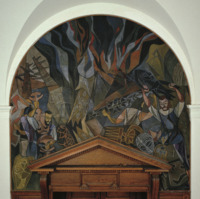 Dissipation dramatizes the colonization and subjugation of Africa by European cultures with specific reference to the British militia that burned Benin to the ground in 1897 and the looting of all its art— still being contested by Nigerian authorities today.
Dissipation dramatizes the colonization and subjugation of Africa by European cultures with specific reference to the British militia that burned Benin to the ground in 1897 and the looting of all its art— still being contested by Nigerian authorities today. Dissipation dramatizes the colonization and subjugation of Africa by European cultures with specific reference to the British militia that burned Benin to the ground in 1897 and the looting of all its art— still being contested by Nigerian authorities today.
-
 Interchange refers to the ongoing cultural exchange among Africans and Europeans, and the subsequent influences that shaped Western civilization. The architectural forms from Rome, Egypt, North Africa, and Scandinavia refer to the cultures.
Interchange refers to the ongoing cultural exchange among Africans and Europeans, and the subsequent influences that shaped Western civilization. The architectural forms from Rome, Egypt, North Africa, and Scandinavia refer to the cultures. Interchange refers to the ongoing cultural exchange among Africans and Europeans, and the subsequent influences that shaped Western civilization. The architectural forms from Rome, Egypt, North Africa, and Scandinavia refer to the cultures.
 [Untitled]
[Untitled]  Ascending Yellow is a memorial exhibition and art auction celebrating the late Dr. Richard A. Long, the longtime Fine Art Advisor to the Galleries. Long’s steadfast devotion to the preservation of the permanent collection made him an invaluable supporter until his death in January 2013. Long had an extensive cultural legacy in the humanities – founder of the Triennial International African Art Symposium in its 15th cycle – and his contribution to the visual arts. Ascending Yellow is a memorial exhibition and art auction celebrating the late Dr. Richard A. Long, the longtime Fine Art Advisor to the Galleries. Long’s steadfast devotion to the preservation of the permanent collection made him an invaluable supporter until his death in January 2013. Long had an extensive cultural legacy in the humanities – founder of the Triennial International African Art Symposium in its 15th cycle – and his contribution to the visual arts.
Ascending Yellow is a memorial exhibition and art auction celebrating the late Dr. Richard A. Long, the longtime Fine Art Advisor to the Galleries. Long’s steadfast devotion to the preservation of the permanent collection made him an invaluable supporter until his death in January 2013. Long had an extensive cultural legacy in the humanities – founder of the Triennial International African Art Symposium in its 15th cycle – and his contribution to the visual arts. Ascending Yellow is a memorial exhibition and art auction celebrating the late Dr. Richard A. Long, the longtime Fine Art Advisor to the Galleries. Long’s steadfast devotion to the preservation of the permanent collection made him an invaluable supporter until his death in January 2013. Long had an extensive cultural legacy in the humanities – founder of the Triennial International African Art Symposium in its 15th cycle – and his contribution to the visual arts. Work of Frederick D. Jones Jr in relation to the art movement known as Social Surrealism. As a branch of Social Realism, Social Surrealism was similarly invested in depicting the plight of workers, laborers, and other social groups positioned on society's margins. The work of Social Surrealists, however, was distinctive for its engagement with the European Surrealist tradition and its emphasis on dreamlike imagery inspired by the unconscious. Work of Frederick D. Jones Jr in relation to the art movement known as Social Surrealism. As a branch of Social Realism, Social Surrealism was similarly invested in depicting the plight of workers, laborers, and other social groups positioned on society's margins. The work of Social Surrealists, however, was distinctive for its engagement with the European Surrealist tradition and its emphasis on dreamlike imagery inspired by the unconscious.
Work of Frederick D. Jones Jr in relation to the art movement known as Social Surrealism. As a branch of Social Realism, Social Surrealism was similarly invested in depicting the plight of workers, laborers, and other social groups positioned on society's margins. The work of Social Surrealists, however, was distinctive for its engagement with the European Surrealist tradition and its emphasis on dreamlike imagery inspired by the unconscious. Work of Frederick D. Jones Jr in relation to the art movement known as Social Surrealism. As a branch of Social Realism, Social Surrealism was similarly invested in depicting the plight of workers, laborers, and other social groups positioned on society's margins. The work of Social Surrealists, however, was distinctive for its engagement with the European Surrealist tradition and its emphasis on dreamlike imagery inspired by the unconscious. The 366th Infantry Regiment was a segregated (all African American or the more appropriate time-specific term, Negro) unit of the United States Army; it served with distinction in both World War I and World War II. This unit was particularly unique because it was one of the few Negro units with all its own officers and personnel. The 366th Infantry Regiment was a segregated (all African American or the more appropriate time-specific term, Negro) unit of the United States Army; it served with distinction in both World War I and World War II. This unit was particularly unique because it was one of the few Negro units with all its own officers and personnel.
The 366th Infantry Regiment was a segregated (all African American or the more appropriate time-specific term, Negro) unit of the United States Army; it served with distinction in both World War I and World War II. This unit was particularly unique because it was one of the few Negro units with all its own officers and personnel. The 366th Infantry Regiment was a segregated (all African American or the more appropriate time-specific term, Negro) unit of the United States Army; it served with distinction in both World War I and World War II. This unit was particularly unique because it was one of the few Negro units with all its own officers and personnel. [Untitled]
[Untitled]  [Untitled]
[Untitled]  [Untitled]
[Untitled]  [Untitled]
[Untitled]  [Untitled]
[Untitled]  [Untitled]
[Untitled]  [Untitled]
[Untitled]  [Untitled]
[Untitled]  [Untitled]
[Untitled]  [Untitled]
[Untitled]  [Untitled]
[Untitled]  [Untitled]
[Untitled]  [Untitled]
[Untitled]  [Untitled]
[Untitled]  [Untitled]
[Untitled]  The Muses symbolize the involuntary marriage of African and European cultures and the evolution of the African artist in the Western hemisphere. Seventeen legendary black artists characterize Woodruff’s notions of a cultural amalgamation including Iqueigha, 13th Century sculptor, Joshua Johnston, a colonial portraitist and a host of 19th and 20th Century artists, such as Henry O. Tanner, Edward M. Bannister, Jacob Lawrence, Richmond Barthe, and Charles Alston. The Muses symbolize the involuntary marriage of African and European cultures and the evolution of the African artist in the Western hemisphere. Seventeen legendary black artists characterize Woodruff’s notions of a cultural amalgamation including Iqueigha, 13th Century sculptor, Joshua Johnston, a colonial portraitist and a host of 19th and 20th Century artists, such as Henry O. Tanner, Edward M. Bannister, Jacob Lawrence, Richmond Barthe, and Charles Alston.
The Muses symbolize the involuntary marriage of African and European cultures and the evolution of the African artist in the Western hemisphere. Seventeen legendary black artists characterize Woodruff’s notions of a cultural amalgamation including Iqueigha, 13th Century sculptor, Joshua Johnston, a colonial portraitist and a host of 19th and 20th Century artists, such as Henry O. Tanner, Edward M. Bannister, Jacob Lawrence, Richmond Barthe, and Charles Alston. The Muses symbolize the involuntary marriage of African and European cultures and the evolution of the African artist in the Western hemisphere. Seventeen legendary black artists characterize Woodruff’s notions of a cultural amalgamation including Iqueigha, 13th Century sculptor, Joshua Johnston, a colonial portraitist and a host of 19th and 20th Century artists, such as Henry O. Tanner, Edward M. Bannister, Jacob Lawrence, Richmond Barthe, and Charles Alston. Influences conveys the impact of traditional art forms (assigning African art the central role) in the development of 20th century Western art. Apparent are the stylized works of European masters such as Henry Moore, Modigliani, Kandinsky, Picasso, and Miró. Adjoining these references is a Haitian Veve painting located above Moore’s reclining nude. Influences conveys the impact of traditional art forms (assigning African art the central role) in the development of 20th century Western art. Apparent are the stylized works of European masters such as Henry Moore, Modigliani, Kandinsky, Picasso, and Miró. Adjoining these references is a Haitian Veve painting located above Moore’s reclining nude.
Influences conveys the impact of traditional art forms (assigning African art the central role) in the development of 20th century Western art. Apparent are the stylized works of European masters such as Henry Moore, Modigliani, Kandinsky, Picasso, and Miró. Adjoining these references is a Haitian Veve painting located above Moore’s reclining nude. Influences conveys the impact of traditional art forms (assigning African art the central role) in the development of 20th century Western art. Apparent are the stylized works of European masters such as Henry Moore, Modigliani, Kandinsky, Picasso, and Miró. Adjoining these references is a Haitian Veve painting located above Moore’s reclining nude. Parallels illustrates the relationships and commonalities among the ancient and traditional art forms of non-European cultures (i.e., Mayans, Aztecs, African, New Guinea, and North American Indians). Located in the light gray area is the Pueblo hunchback flutist and fertility symbol, Kokopelli, which has become a popular icon of native American culture. Parallels illustrates the relationships and commonalities among the ancient and traditional art forms of non-European cultures (i.e., Mayans, Aztecs, African, New Guinea, and North American Indians). Located in the light gray area is the Pueblo hunchback flutist and fertility symbol, Kokopelli, which has become a popular icon of native American culture.
Parallels illustrates the relationships and commonalities among the ancient and traditional art forms of non-European cultures (i.e., Mayans, Aztecs, African, New Guinea, and North American Indians). Located in the light gray area is the Pueblo hunchback flutist and fertility symbol, Kokopelli, which has become a popular icon of native American culture. Parallels illustrates the relationships and commonalities among the ancient and traditional art forms of non-European cultures (i.e., Mayans, Aztecs, African, New Guinea, and North American Indians). Located in the light gray area is the Pueblo hunchback flutist and fertility symbol, Kokopelli, which has become a popular icon of native American culture. Dissipation dramatizes the colonization and subjugation of Africa by European cultures with specific reference to the British militia that burned Benin to the ground in 1897 and the looting of all its art— still being contested by Nigerian authorities today. Dissipation dramatizes the colonization and subjugation of Africa by European cultures with specific reference to the British militia that burned Benin to the ground in 1897 and the looting of all its art— still being contested by Nigerian authorities today.
Dissipation dramatizes the colonization and subjugation of Africa by European cultures with specific reference to the British militia that burned Benin to the ground in 1897 and the looting of all its art— still being contested by Nigerian authorities today. Dissipation dramatizes the colonization and subjugation of Africa by European cultures with specific reference to the British militia that burned Benin to the ground in 1897 and the looting of all its art— still being contested by Nigerian authorities today. Interchange refers to the ongoing cultural exchange among Africans and Europeans, and the subsequent influences that shaped Western civilization. The architectural forms from Rome, Egypt, North Africa, and Scandinavia refer to the cultures. Interchange refers to the ongoing cultural exchange among Africans and Europeans, and the subsequent influences that shaped Western civilization. The architectural forms from Rome, Egypt, North Africa, and Scandinavia refer to the cultures.
Interchange refers to the ongoing cultural exchange among Africans and Europeans, and the subsequent influences that shaped Western civilization. The architectural forms from Rome, Egypt, North Africa, and Scandinavia refer to the cultures. Interchange refers to the ongoing cultural exchange among Africans and Europeans, and the subsequent influences that shaped Western civilization. The architectural forms from Rome, Egypt, North Africa, and Scandinavia refer to the cultures.